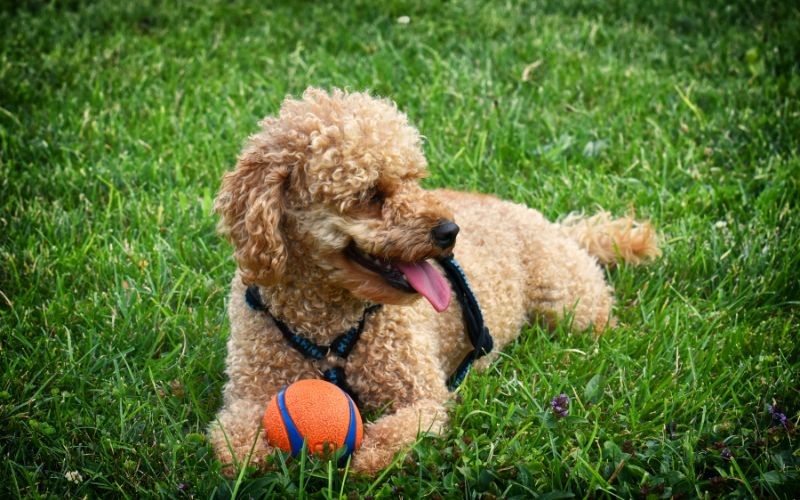
Dog Park Etiquette: Tips every pet parent should know
There’s nothing quite like spending time at the park with your dog—watching him run, explore, and soak up all the new sights and smells. It’s one of the simple joys of being a pet parent. But along with the fun comes a shared responsibility. The dog park isn’t just a playground for your pup; it’s a common space where safety, respect, and harmony matter for everyone. Understanding and following a few unspoken rules helps ensure that all dogs and their owners can enjoy a positive experience. So, let’s take a look at what these unspoken rules are—and how they can help everyone have a great time at the park.When to Let Your Dog Off-Leash
A dog should be allowed off-leash only if they reliably respond to recall. Freedom at the park is a privilege, not a right—and it comes with the responsibility of ensuring your dog doesn’t intrude on others. An off-leash dog shouldn’t be the one greeting every pet or person without permission. Instead, he should stay reasonably close to you, be free to explore but always aware of your presence. Most importantly, your dog should come back to you quickly and happily the moment you call, and should never approach other dogs or people unless you’ve clearly allowed it.
When (and How) to Let Dogs Interact
Dogs should never interact while on leash. The leash limits their ability to communicate naturally and, more importantly, it takes away their freedom to walk away from an interaction they don’t feel comfortable with. On top of that, dogs can easily pick up on their pet parent’s tension through the leash, which may cause unnecessary stress or reactivity.
That’s why it’s best to let dogs interact only when they’re off-leash, in a secure environment, and when both dogs are clearly interested and comfortable. Respecting the needs and boundaries of both dogs is key to a safe and positive social experience.
Recognizing When Play Becomes Stressful
When choosing a good playmate for your dog, keep in mind that true play usually happens between dogs who already know each other. What often looks like “play” at first sight might actually be an exploratory greeting, or, in some cases, a one-sided interaction that borders on bullying (that doesn’t mean it’s aggressive, but it’s not healthy or balanced play either). In general, dogs tend to get along best with those who match their energy and personality. Calm dogs usually prefer other calm dogs, just like highly social dogs may enjoy a more playful, high-energy partner.
Paying attention to stress signals is essential to understanding whether your dog is enjoying the interaction or not. Some dogs may simply prefer interacting with their “humans”, or alternating between people and dogs, and that’s perfectly okay. Also, not every dog wants to play with others, especially as they mature.
Common signs of stress in dogs include:
• Frequent lip licking
• Yawning
• Avoiding eye contact
• Hiding or trying to escape
• Making themselves small
• Tail tucked between the legs
How to Approach Dog Areas
Dog parks are often popular because they feel safer, they’re fenced in, after all. But there are a few important things to consider before deciding to use them. First and foremost, always ask before entering. Not all dogs get along, and not all of them enjoy interacting with unfamiliar dogs. That needs to be respected, it should never be assumed that every dog wants to socialize.
These areas are often quite small, and when too many dogs are inside, the space can quickly become overwhelming and stressful. A crowded dog park can create tension and lead to conflicts, especially if dogs feel they can’t get away from each other when they need to.
Another key point is that your dog’s playmates should be chosen based on compatibility—not just convenience. While it’s not always easy to tell, not every dog your pup meets is a good match, and that’s perfectly normal. Just like people, dogs have preferences.
If the dog park becomes too challenging to manage—whether due to overstimulation, recurring conflicts, or your dog’s discomfort—taking a step back might be the wisest choice. In such cases, structured walks or quiet open spaces can offer a valuable alternative. These environments allow your dog to move at their own pace, sniff, explore, and choose whether to engage or simply enjoy a calm moment. Sometimes, this freedom can provide more meaningful enrichment than navigating constant tension in a confined space.
Conclusion
Being a responsible pet parent goes beyond providing the basics of food, water, and shelter. It’s about ensuring your dog has positive, safe, and enjoyable experiences, both at home and in social settings like the dog park. By respecting your dog’s boundaries, understanding their social needs, and always prioritizing their comfort, you help create a more harmonious environment for everyone—both dogs and humans.
Remember, the park is just one of many ways for your dog to socialize. A calm walk or exploring new environments can offer your dog just as much enrichment and mental stimulation—sometimes even more! By staying mindful and attentive to your dog’s well-being, you’ll not only build a stronger bond with your furry friend, but you’ll also contribute to a positive, respectful community of dog lovers.
Let’s make every visit to the park a rewarding one, for both you and your dog!

